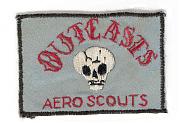You already quoted it:
The role of the infantry in land forces (which are composed of more than only infantry) combat is to do this:
It's general enough to do justice to the infantry's versatility (which is much more than only assaults) and still describes its specific relative strength and the demand for it that follows out of this relative strength.The infantry's tasks are therefore almost all of those (line-of-sight) combat missions which can better be accomplished dismounted than mounted.













Bookmarks